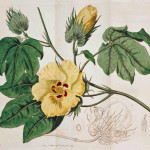My journey into the land of upcycling took a new turn when I met Evelien from Rescued during a Galaxy workshop.…
The good old T-shirt
In doing Action Weaving, and now Galaxy, a lot of T-shirts have passed through my hands. Time for an in-depth piece about this indispensible part of the modern wardrobe. As luck has it, my daily did a feature on Tshirts, so the following is a translation of the article titled “fashion classics” in Trouw of saturday august 24th, 2013:
Some garments are way beyond the wild swarming of trends, whims, logo’s and hypes. The last installment of this series deals with the simple T-shirt.
Text: Sarah-Mie Luyckx
A tribute to the centenarian! The good old T-shirt celebrates its 100th birthday this year. In 1913 the garment was introduced into the wardrobe of American marines, after which it found its way to the rest of the world, through acclimatizing different styles of dress shirts popular and trending at that time. The birthday of this nifty little sweater, that owes its name to its T-shape, is worth a congratulation. Almost everyone has a pile of them in the closet.
For starters: the simple variety that comes in one colour, and that are always useful. And maybe some special ones, never worn but kept for nostalgic reasons. In my case: a number of the tourist kind. Bought when on holiday and euphoric. Taken home, one wonders what to do with a souvenir that shouts to the world that one loooooves Crete. Wear it to the gym, just once. Then into the deepest drawer.
According to fashion guru’s, T-shirts with prints are forbidden fruit for anyone over 21. Too childish. I happen to disagree. Upmarket brands offer T-shirts with pretty motives that don’t target the under-aged only. And a classic logo of a legendary band is ok, too. I happen to own the famous tongue and lips of the Rolling Stones, that I like to team with a well-behaved vest. Not that I’m a hardcore fan: I just think the challenging logo looks good.
The trademark of the American punk rock group The Ramones is often worn for this reason by persons that don’t have a vibe with the band that passed away seventeen years ago. Last june Arturo Vega died, the man behind the popular logo, that is based on the presidential coat of arms of the United States. Vega had every reason to look upon his work with satisfaction. The emblem with the eagle is better known these days than the repertoire of the Ramones: the shirts still sell. H&M had them in their collection last year.
The same goes for the revolutionary marxist Che Guevara, executed in 1967. His famous portrait, taken by Alberto Korda, looks upward from many a T-shirt-webshop. It is debatable whether the garment – once meant to show sympathy with Che’s legacy – is bought online by consumers that think revolution is in order. Guevara would not have liked this. He wasn’t a fan of capitalism.
The english fashion designer Katharine Hmnett found the effect of T-shirts with a message to be rather limited. She became famous for her T-shirts – size of a mini-dress – with slogans criticizing society. They were still readable from a kilometer away: SAVE THE SEA, BAN THE BOMB and NO WAR. Hamnett stated in a recent interview that it is tragic the slogans are still contemporary. A pity also: her best-known shirt, stating CHOOSE LIFE – made world famous by the Wham! duo – is confiscated by the American anti-abortion movement. This was never her intention.
And it all started so very simple. The T-shirt derives from a sleeping suit of sorts, woollen and with long sleeves, worn as underwear at the end of the nineteenth century. When times became less puritan, and with an eye to wearability, the suit was cut up in two pieces, given short sleeves and made of cotton, that became available in ever greater quantity. The mega-order by the American Navvy in 1913 is seen as its official introduction. The army followed suit not long after. Even though meant for underwear, for practical reasons (heat and heayvy labour) the pieces were often worn separately, which paved the way for their present all-utility status.
As usual for an iconic garment, Hollywood contributed a lot to its popularity with the general public. A very macho Marlon Brando wore a very close-fitting one in ‘A Streetcar Named Desire’ (1951), making very clear that the simple garment could be ueber-chic. Four years later, James Dean in “Rebel Without a Cause’ added fuel to the fire.
Although virgin white at its conception, Americans soon discovered the T-shirt as a vehicle for slogans. In 1952 the Dwight Eisenhower campain made first use of this option with the slogan ‘I Like Ike’ (still for sale). On the non-political side the firm Tropix Togs from sunny Florida put Disney cartoon and names of popular holiday resorts on their shirts. In the sixties, the first pop-T-shirts came on the market, an instant commercial hit. But it wasn’t just the boys with the big bucks that had fun with the garment. The hippies also loved them: they created their own look using tie&dye, a dyeing technique that allowed for psychedelic patterns. Ten years later the punk movement opted for rents and lots of safety pins.
The trend now is do-it-yourself. Counterbalancing the mass-production of clothes – of which the T-shirt is the ultimate symbol – shirts are pimped and designed by individuals; lots of webshops facilitate this. It is a good idea for funny gifts to your friends, don’t you think?
So there is a lot of recycling. Those non-creatives that are into sustainability: buy a mariniere, the shirt with the classic Breton stripes that never goes out of fashion and that looks good on everyone. A classic come back for the most recent fashion season. With a reason.
| « Dimensions | <-- previous post | next post --> | The Dangerous Cutter » |
|---|








